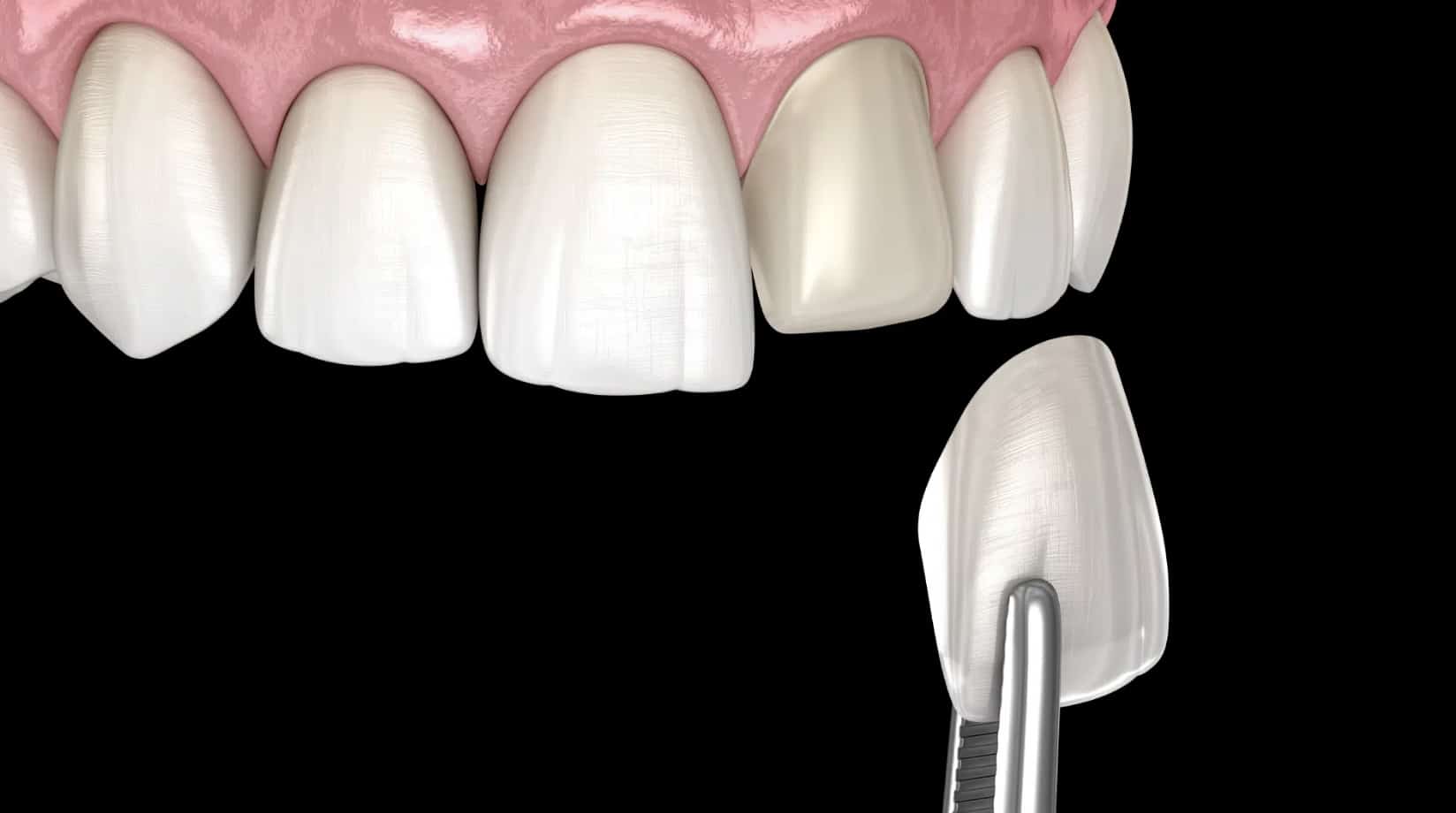
Benefits of dental veneers
- Natural aesthetic appearance: Ceramic perfectly imitates the appearance of tooth enamel.
- Stain resistance: Ceramic veneers are highly resistant to stains caused by coffee, tea or tobacco.
- Quick solution: Compared to orthodontic treatments, they offer a rapid transformation of the smile.
- Preservation of the natural tooth: Unlike crowns, veneers require minimal tooth preparation.

Disadvantages and limitations
- Irreversible treatment: A slight reduction of the enamel is often necessary to fix the veneers, making the process irreversible.
- Fragility: Although durable, veneers can crack or come loose in case of impact or inappropriate use (for example, biting hard objects).
- High cost: Veneers, especially ceramic ones, are more expensive than other cosmetic options.
- Not suitable for severe problems: Veneers cannot correct significant malocclusions or badly damaged teeth requiring crowns.

How is veneer placement done?
1. Initial consultation and diagnosis
The orthodontist or dentist examines the teeth, takes X-rays and discusses the patient’s expectations.
2. Teeth preparation
A thin layer of enamel (0.3 to 0.7 mm) is removed to allow the veneer to bond properly.
3. Taking of impressions
The dental impressions are sent to a laboratory to manufacture the custom-made veneers.
4. Placement and ajustement
Once the veneers are ready, they are tried on, adjusted and permanently bonded to the teeth.

A fantastic solution
Veneers are an excellent solution for quickly and permanently improving the aesthetics of the smile. They are particularly suitable for patients seeking correction of mild to moderate tooth defects while maintaining a natural appearance. Regular maintenance and good oral hygiene are essential to preserve their lifespan, which is generally estimated at between 10 and 15 years.
Make an appointment at one of our two clinics



